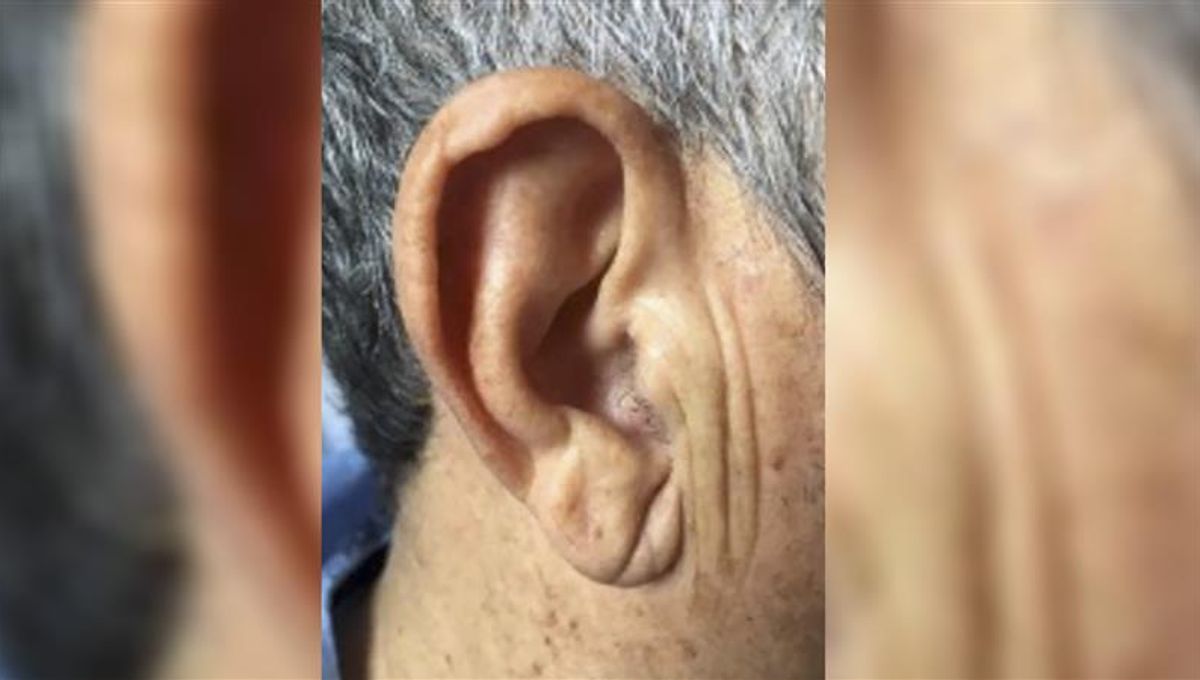
Have you ever noticed a strange crease or fold in your earlobes or those of people you know? It looks like a diagonal line that extends backwards and diagonally across the earlobe from the tragus (the fleshy bump in front of your ears’ opening) to its edge. This fold, known as Frank’s sign, has a disarmingly quaint sounding name given that some believe it could indicate coronary artery disease.
Frank’s sign was first reported by Dr Sanders T. Frank in 1973, an American pulmonologist, who noticed this peculiar crease was present in 20 patients with angina – a condition that causes chest pain and discomfort due to reduced blood flow to the heart. According to Dr Frank, this type of earlobe fold was a physical sign that could indicate the presence of coronary artery disease.
The cause of this sign is still unclear. In the 1980s, it was reported that Frank’s sign was caused by insufficient arterial supply in the earlobe. However, in the 1990s, other researchers believed the sign was associated with macrophage activity – a type of white blood cell – atherosclerosis, ageing, and the overall preservation of earlobe collagen.
There have also been genetic studies that suggest the fold is related to HLA-B27 and C3-F genes and chromosome 11, while other work has indicated that Frank’s Sign could be associated with shortening telomeres – a process involved in aging – in peripheral white blood cells. There have also been those who hypothesize that the Sign is caused by the loss of elastic fibres in the skin, due to oxidative stress (harmful molecules in the body), and thickening of small blood vessels in the earlobe. As the earlobes don’t have “collateral” blood vessels, this could reduce blood flow in a similar way to changes happening in the heart’s arteries.
Since Frank first described this possible association, the sign has been studies to assess its links with various cardiovascular conditions other diseases, such as cerebrovascular events. But while some studies have supported its predictive value, some have also demonstrated no significant correlation. As such, the general view is that the presence of the sign is not itself sufficient to predict the presence of disease, but it does seem to be prevalent in some chronic diseases and with aging. Inspection of the earlobes should be considered an integral part of the physical examination in clinical practice for patients who are suspected of having coronary artery disease.
As with many physical signs, the simple identification of it is just the first step. After this, medical experts can determine the potential severity of any underlying disease based on its appearance. The grading system for Frank’s Sign is based on length, depth, bilateralism and inclination of the mark.
A unilateral and incomplete line indicates the least severe case of cardiovascular disease, while a complete bilateral line can indicate the more severe cases.
The sign is quite common and has been identified in various famous people, both living and dead. Statues of the Roman emperor Hadrian, for instance, appear to include it, which is interesting as he seems to have suffered from hypertension. Former President George W. Bush is also known to have it.
The content of this article is not intended to be a substitute for professional medical advice, diagnosis, or treatment. Always seek the advice of qualified health providers with questions you may have regarding medical conditions.
Source Link: If You Have This Weird Line On Your Earlobe, What Does It Mean?